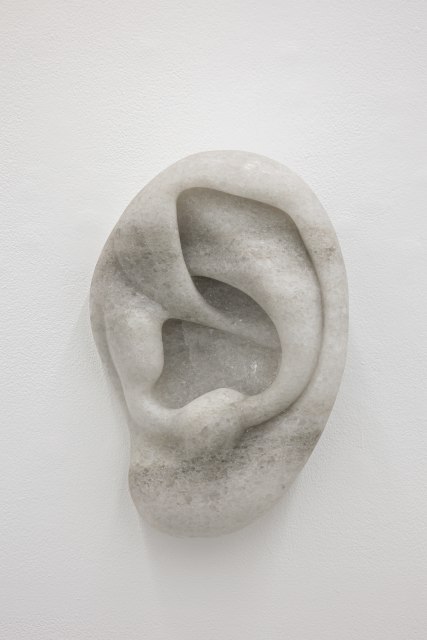Carbon 12 is enthusiastic to announce the group exhibition, À Bout de Souffle.
The exhibition includes artworks from artists Omar Barquet, Olaf Breuning, André Butzer, Gil Heitor Cortesão, Jojo Gronostay, Michael Sailstorfer, Sara Rahbar and Anahita Razmi.
We spend no time in between reminiscing and disremembering. With sights set towards the immediate future, we relinquish all notion of the present. Never remaining within the stillness of a moment. À Bout de Souffle (‘breathless’) is an exhibition that occurs and unfolds as a deconstruction of one, fleeting moment. In isolating a cinematic still, our feet grounded, the exhibition seamlessly flits in and out of the present moment, encouraging us to absorb, and to release.
As a bubble expands in size, with its iridescent walls shifting in endless lucid colors, the ever-growing anticipation of being suspended in tension only grows - the artworks from the exhibition drift between various states of calm and calamity. Jojo Gronostay’s artwork frames the hand of a street vendor, barely grasping ropes connected to blankets that serve as displays for fake designer products. Through capturing a transient state, a moment in transit, he juxtaposes conflicting elements of calm and chaos.
Anahita Razmi’s video installation focuses on hand movements and technological devices, composing a new choreography using stock footage videos of scrolling hands and fingers. Razmi explores and searches for new ways of navigation by reframing these gestures or motions that are seemingly intuitive and internalised by applying a new “non-fitting”, “exotic”, sonic connection to them. Razmi draws a relation to musical instruments – tapping, plucking, scrolling: How are we touching a touch screen? How are we touching a drum or a string instrument?
Witnessing a scene unravel and spiral out of control before you. A buildup becomes a knot in your stomach, not untangling. Almost dangling, Omar Barquet’s sculptural work hangs in a corner, suspended by a delicate thread. The pristine nature of the object, with its sharp, sweeping curves as a harsh contrast to its materially reflective surface, builds an almost palpable tension with its most subtle swaying. This tension only just escapes us - from its striking resemblance to that of a guillotine, to the elegance of its own movement.
Sara Rahbar’s War series (2008-2010) is a reflection on the global sociopolitical context of our times. Her textile-based assemblage, overridden with predominantly military objects - bullets, pickaxes, horse bridles - their brusque material portions splayed and sectioned in a surgical manner. Their arrangement translates an inherent, deep-seated feeling of dread, tightly bundled together and yet, vividly exposed.
Within André Butzer’s N-Paintings (2010–2017), he focuses on a gradual intensification of pictorial means. “N” is an imaginary destination, wherein he encapsulates the concept of a non-place that resides as a frequency on the edge of annihilation. Emphasised by an interstice placed in relation to a plane full of color, which Butzer explores to the maximum of its potential. The hue of dark light, as Butzer states, inhabits the plane so that the painting itself transforms into a source of light.
Caught in the continuous process of grasping and holding on to fear and tension, we must move on to the search for some semblance of light. Like tense posture and shoulders rigid, the act of exhaling is the final preparation for yet another state: calm. Gil Heitor Cortesão’s painting emanates a melancholic stillness, whilst simultaneously pulling the viewer into its surreal environment. Through his reverse-glass painting technique, Cortesão adds layers to the painting - despite its tranquility, the ambience suggests a slow approaching turbulence, a slow brewing darkness.
Michael Sailstorfer’s salt sculpture, titled I can hear you, is composed entirely of salt - when exposed to the elements, the salt undergoes a transformational process and disintegrates. The erosion process alludes to the very transience of nature, and harkens back to the essence of it all - to draw in a breath of air, and let go of it.
In hopes of going with the constant ebb and flow of daily life, in hopes of returning to regular cycles and systematic processes, we move forward - despite our own halting doubts and litany of questions. In this vein, Olaf Breuning’s humour is the forefront of his artistic practice, wherein his photographic work contains group of people have been transformed into expressionless objects, wearing only paper bags over their heads and cardboard boxes on their hands, feet and torsos. Seeming to question their current predicament of being specifically arranged beside one another, they return to the situation at hand - why, in fact, are they there, with letters on their chests?
Breuning calls the bigger picture to mind through the title of the work itself: Can someone tell us why we are here?





